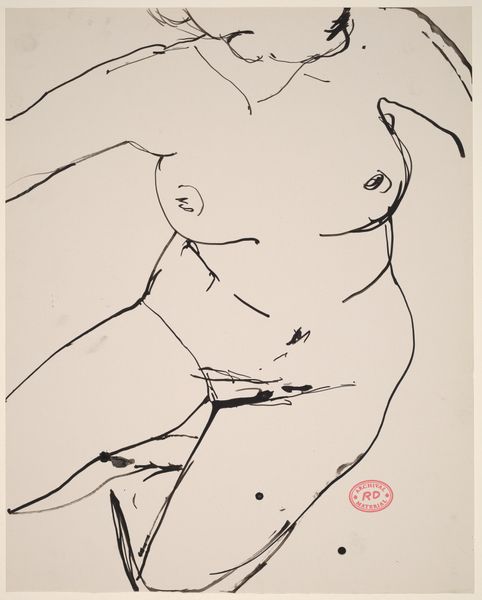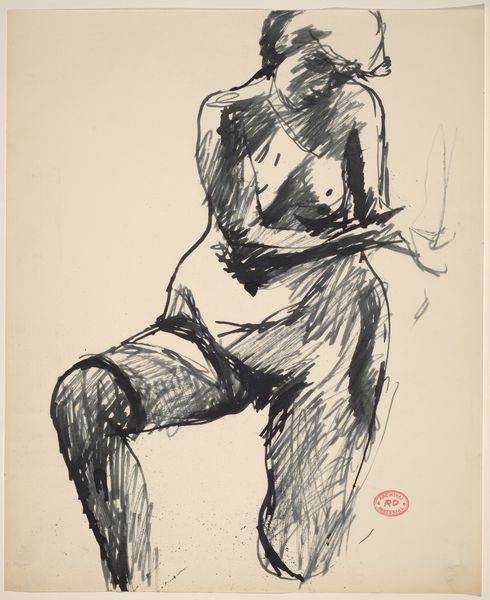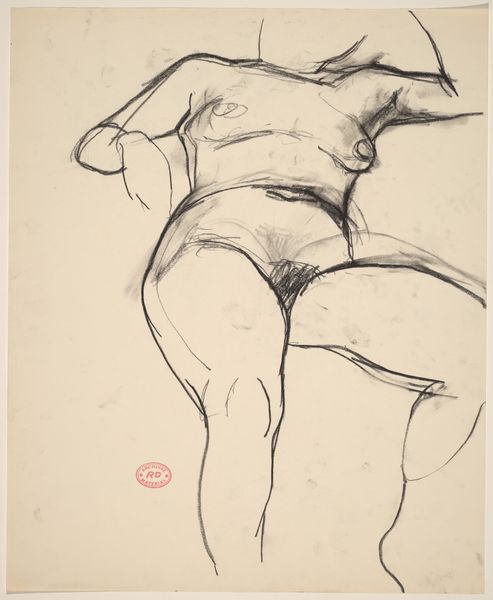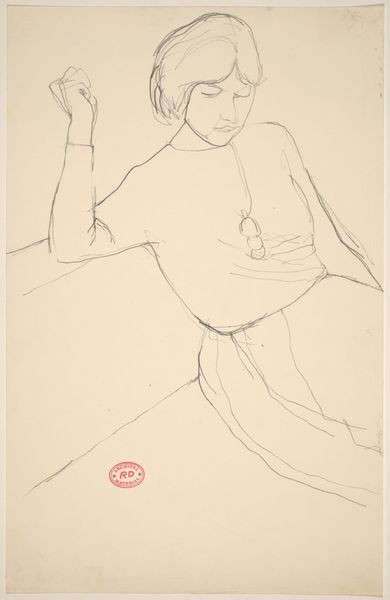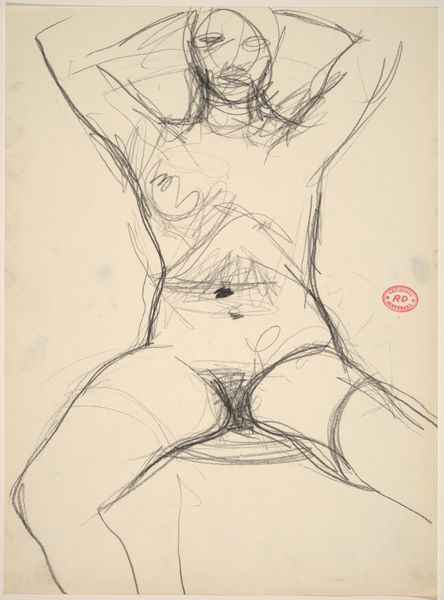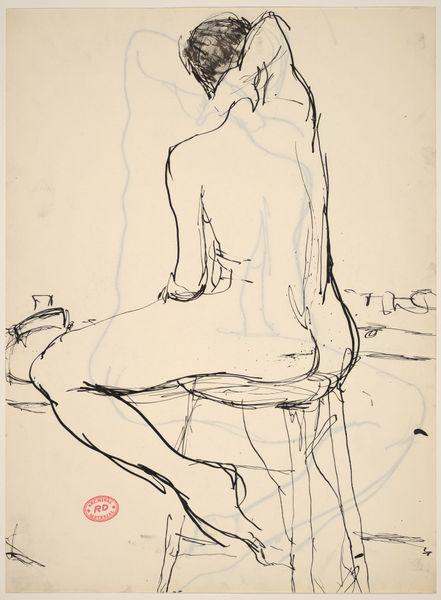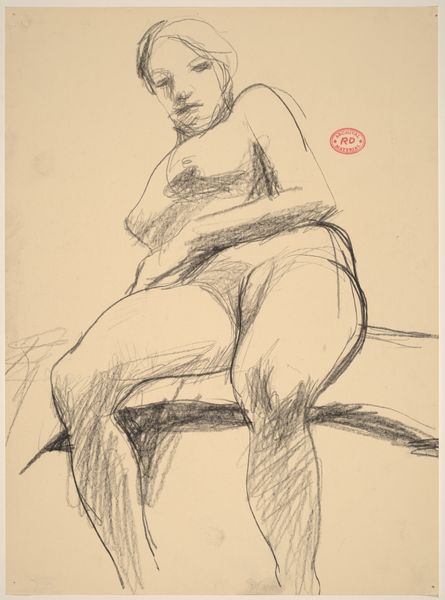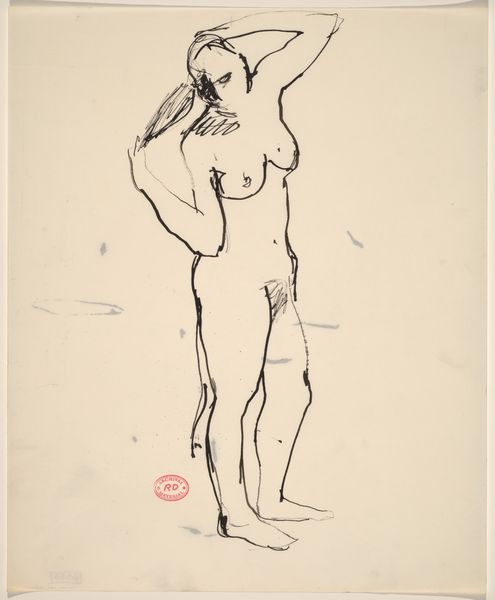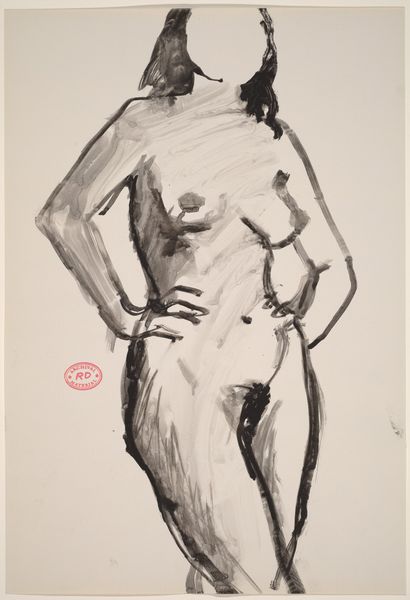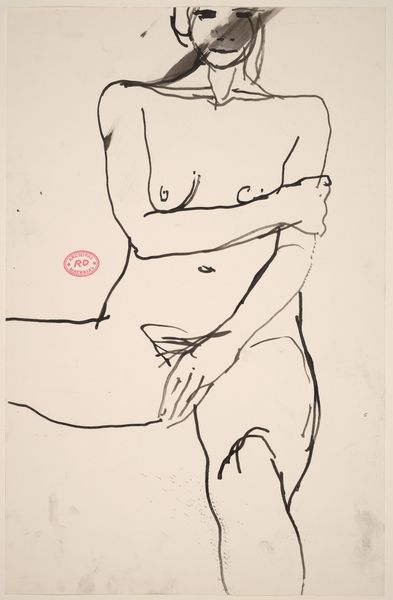![Untitled [reclining nude lying back with her left hand behind her head] by Richard Diebenkorn](/_next/image?url=https%3A%2F%2Fd2w8kbdekdi1gv.cloudfront.net%2FeyJidWNrZXQiOiAiYXJ0ZXJhLWltYWdlcy1idWNrZXQiLCAia2V5IjogImFydHdvcmtzL2Q5ZmQ5YmQ1LTY5MzItNGM3OC04MDBjLTcxMDk2OGQyMmZlMy9kOWZkOWJkNS02OTMyLTRjNzgtODAwYy03MTA5NjhkMjJmZTNfZnVsbC5qcGciLCAiZWRpdHMiOiB7InJlc2l6ZSI6IHsid2lkdGgiOiAxOTIwLCAiaGVpZ2h0IjogMTkyMCwgImZpdCI6ICJpbnNpZGUifX19&w=3840&q=75)
Untitled [reclining nude lying back with her left hand behind her head] 1955 - 1967
0:00
0:00
drawing, ink
#
drawing
#
ink drawing
#
figuration
#
bay-area-figurative-movement
#
ink
#
nude
#
modernism
Dimensions: overall: 43.2 x 27.9 cm (17 x 11 in.)
Copyright: National Gallery of Art: CC0 1.0
Editor: Here we have an ink drawing by Richard Diebenkorn, likely created between 1955 and 1967, titled "Untitled [reclining nude lying back with her left hand behind her head]". It’s so raw, so immediate. I’m interested in understanding the artist's vision, the methods he employs, and how it relates to the history of the nude in art. What do you make of this work? Curator: Ink, as a material, implies a directness. Here, it exposes the artistic process, the artist's hand evident in every stroke. How do we interpret this ‘raw’ quality in relation to consumerism in mid-century America? Does the sketch become a commodity itself, valued for its perceived authenticity of creation? Editor: That's a fascinating perspective. So you're saying that even the seemingly spontaneous lines carry the weight of their potential as objects of value and consumption? Curator: Precisely. Consider the labor involved – Diebenkorn’s time, the manufacture of the ink, the paper. These elements, usually invisible, are integral. We consume not just the image, but also a trace of the artist’s process. How does this change our understanding of "Untitled?" Does the lack of clear title emphasize or erase the materiality? Editor: Interesting. I hadn’t considered how the very lack of title adds to its ambiguous market position! Are you suggesting the commodification aspect also changes the viewing experience? Curator: Absolutely! Knowing the drawing's historical period shapes our reading. We appreciate the drawing technique itself, how he uses line, shading, and composition. Now think about the economics of art – the gallery system, collectors, and their influence on artistic production. It all becomes a question of how art is produced, distributed, and consumed. Editor: This perspective really deepens my understanding of the artwork. I never thought to consider it in the context of materiality, but you've truly shown how to consider the creation and distribution affecting value, production, and therefore our engagement. Curator: And how the artwork actively challenges traditional boundaries between high art and simple sketch by highlighting labor and materials. This affects how we view "Untitled."
Comments
No comments
Be the first to comment and join the conversation on the ultimate creative platform.
